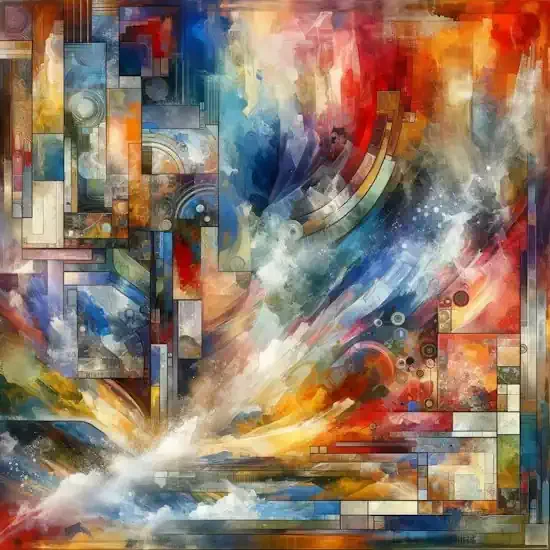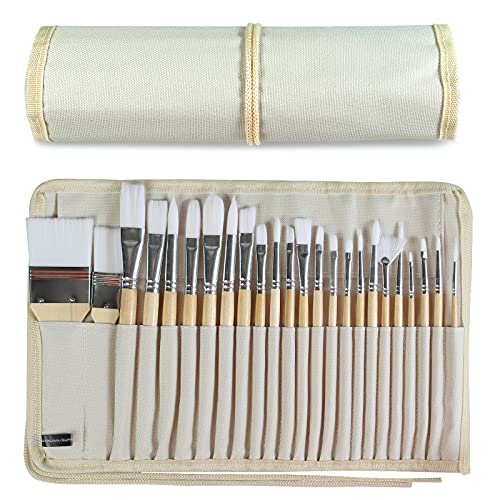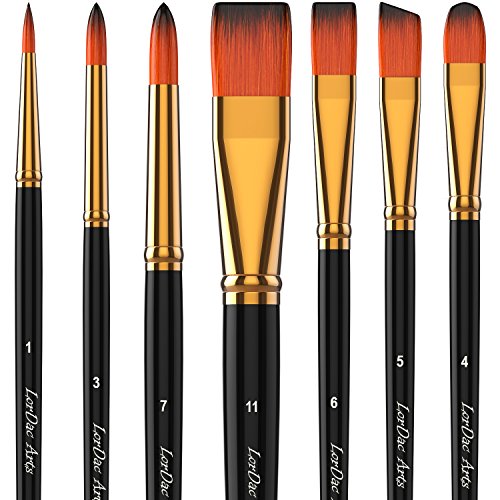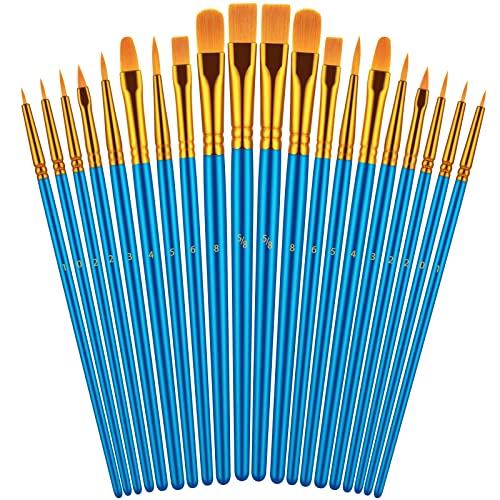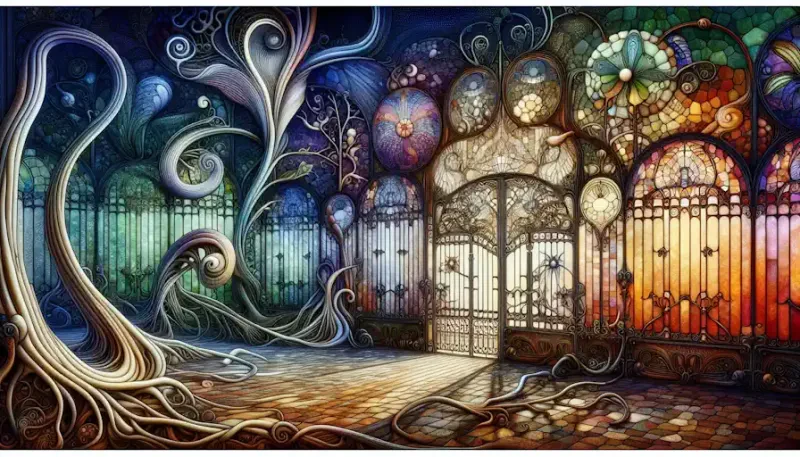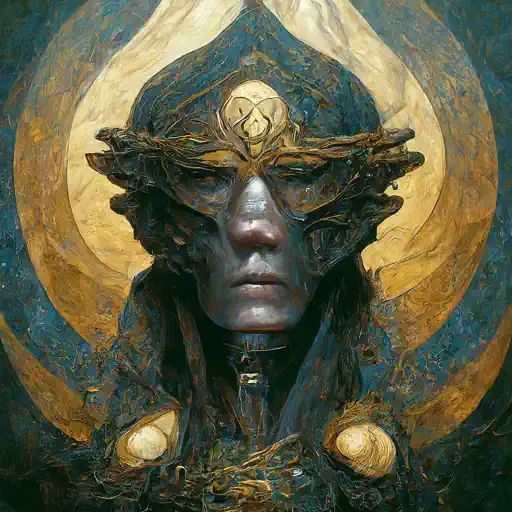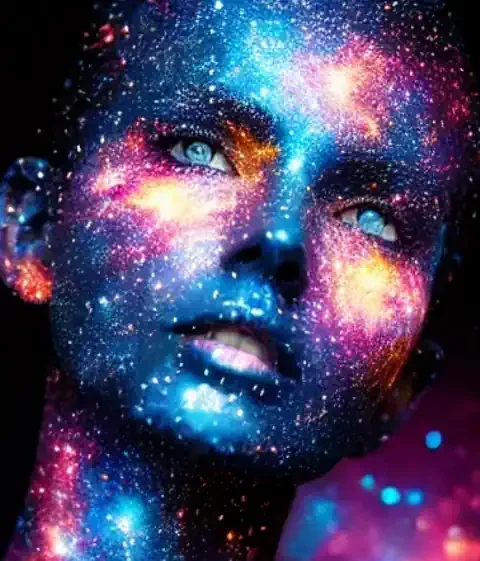Introduction
Art is a boundless realm of human creativity, where individuals express their thoughts, emotions, and perspectives through various mediums. These mediums, ranging from traditional techniques like painting and sculpture to digital innovations such as digital art and 3D modeling, offer endless avenues for artistic exploration. Understanding the diversity of art mediums not only enriches our understanding of human expression but also opens doors to new forms of creativity and appreciation.
Definition of Art Mediums
Art mediums refer to the materials and techniques used by artists to create their work. They encompass a wide array of tools and methods, each with its own unique characteristics and possibilities for expression. From the tactile textures of clay in sculpture to the intricate strokes of a digital brush in digital painting, art mediums serve as the building blocks of artistic creation.
Importance of Exploring Diverse Art Forms
Exploring diverse art forms is essential for several reasons. Firstly, it broadens our artistic horizons, exposing us to a rich tapestry of cultural traditions and contemporary innovations. By engaging with a variety of mediums, artists and enthusiasts alike can gain new insights and perspectives, fostering a deeper appreciation for the breadth and depth of human creativity.
Moreover, diversity in art mediums encourages experimentation and innovation. When artists venture beyond familiar techniques, they challenge conventions and push the boundaries of artistic expression. This spirit of exploration not only fuels individual creativity but also contributes to the evolution of art as a whole.
Overview of What Will Be Covered in the Article
In this article, we will embark on a journey through the diverse landscape of art mediums, exploring traditional techniques, digital innovations, performing arts, literary forms, and artisanal crafts. From the timeless elegance of painting and sculpture to the cutting-edge realms of digital art and 3D modeling, we will delve into the unique characteristics and creative possibilities of each medium.
Additionally, we will examine the intersections between different art forms, from mixed media compositions to collaborative projects that blur the boundaries between disciplines. By celebrating the richness and diversity of art mediums, we hope to inspire readers to embrace their own creativity and embark on their own artistic explorations.
Traditional Art Mediums
Traditional art mediums have long been cherished for their time-honored techniques and expressive qualities. From the luminous colors of oil painting to the delicate lines of graphite drawing, these mediums offer artists a rich array of tools for creative expression. Let's explore some of the most prominent traditional art mediums:
Painting
Painting is a versatile medium that allows artists to create vibrant compositions using various pigments and binders. Here are three popular painting techniques:
Oil Painting: Oil painting involves mixing pigments with a drying oil, typically linseed oil, to create rich and lustrous colors. Known for its depth, blending capabilities, and longevity, oil painting has been a favored medium among artists for centuries.
Watercolor Painting: Watercolor painting utilizes translucent pigments suspended in water to achieve delicate and ethereal effects. This medium is prized for its luminosity, spontaneity, and fluidity, making it ideal for capturing fleeting moments and atmospheric scenes.
Acrylic Painting: Acrylic painting employs fast-drying acrylic polymers as a binder for pigments, offering artists the versatility of water-based paints with the durability of oil paints. Acrylics can be applied in thin layers for translucent effects or layered thickly for textured impasto techniques.
Drawing
Drawing is the foundation of visual art, allowing artists to explore line, form, and composition through various mark-making techniques. Here are three common drawing mediums:
Graphite: Graphite, a form of carbon, is widely used for drawing due to its versatility and range of values. Artists employ graphite pencils of varying hardness to create precise lines, subtle gradients, and expressive textures.
Charcoal: Charcoal, made from burnt wood, offers rich, velvety blacks and a wide range of tonal values. Charcoal drawings are characterized by their bold contrasts and expressive, gestural marks, making them ideal for dynamic compositions and dramatic lighting effects.
Pen and Ink: Pen and ink drawing involves using various types of pens, such as dip pens, fountain pens, or technical pens, to create precise lines and intricate details. Ink can be applied in a variety of ways, from delicate hatching and cross-hatching to bold stippling and calligraphic strokes.
Sculpture
Sculpture is the art of shaping and manipulating materials to create three-dimensional forms. Here are three common sculptural mediums:
Clay: Clay is a malleable material that can be shaped and molded by hand or sculpting tools. It can be fired in a kiln to create permanent ceramic sculptures or left unfired for temporary works.
Stone: Stone carving involves chiseling, carving, and polishing stones such as marble, granite, or limestone to create sculptures of enduring beauty and strength. Stone sculptures range from intricate figurative works to abstract forms that explore the natural qualities of the material.
Wood: Wood carving encompasses a wide range of techniques, from relief carving and whittling to intricate chip carving and sculptural assemblages. Wood offers warmth, texture, and a sense of organic vitality to sculptural works, inviting viewers to engage with its tactile surfaces and natural grains.
Digital Art Mediums
In the digital age, artists have embraced new technologies to create innovative and captivating works of art. Digital art mediums offer unprecedented flexibility, allowing artists to explore endless possibilities in image-making, design, and sculpting. Let's delve into three prominent digital art mediums:
Digital Painting
Digital painting involves creating artwork using digital tools and software, often emulating traditional painting techniques. Here's an overview of digital painting:
Using Software like Photoshop: Adobe Photoshop is one of the most widely used software for digital painting. Its vast array of brushes, filters, and editing tools enables artists to manipulate images with precision and creativity.
Digital Brushes and Techniques: Digital painting software offers a wide variety of brushes that simulate traditional media such as oil, watercolor, and pastels. Artists can experiment with brush settings, opacity, and blending modes to achieve desired effects, from realistic textures to abstract compositions.
Graphic Design
Graphic design encompasses the creation of visual compositions for communication and expression. Here's what you need to know about graphic design:
Creating Visual Compositions: Graphic designers use layout, typography, imagery, and color to convey messages and ideas effectively. They may design posters, logos, advertisements, websites, and other visual materials for print or digital media.
Use of Typography and Color Theory: Typography plays a crucial role in graphic design, shaping the visual identity and readability of a design. Color theory guides designers in choosing harmonious color palettes that evoke specific emotions and enhance visual impact.
3D Modeling
3D modeling involves creating three-dimensional digital models of objects, characters, environments, and more. Here's a glimpse into 3D modeling:
Creating Digital Sculptures: 3D modeling software allows artists to sculpt virtual objects with precision and detail, similar to traditional sculpting techniques. Artists can manipulate vertices, edges, and polygons to shape and refine their models, adding textures and materials for realism.
Use in Animation and Gaming Industries: 3D modeling is indispensable in animation and gaming, where it is used to create characters, props, environments, and special effects. Artists collaborate with animators, game developers, and visual effects artists to bring their creations to life in movies, video games, and virtual reality experiences.
Digital art mediums offer a dynamic and versatile canvas for artistic expression, pushing the boundaries of creativity and innovation in the digital realm. Whether creating digital paintings, graphic designs, or 3D models, artists continue to explore new techniques and technologies, inspiring audiences with their imaginative visions and groundbreaking achievements.
Mixed Media
Mixed media art is a dynamic and versatile form of artistic expression that combines multiple mediums, techniques, and materials to create richly layered and visually compelling works. In this section, we'll explore the definition of mixed media, provide examples, and delve into how artists blend traditional and digital mediums in their creations.
Definition and Examples
Mixed media art encompasses a wide range of approaches, from collage and assemblage to painting and sculpture, where artists integrate diverse materials such as paper, fabric, found objects, paint, ink, digital imagery, and more. Here are some examples of mixed media techniques:
Collage: Artists assemble various materials, such as magazine cutouts, photographs, fabric, and ephemera, onto a surface to create a cohesive composition that explores texture, color, and narrative.
Assemblage: Assemblage involves the incorporation of three-dimensional objects and found materials into a sculptural artwork, often creating unexpected juxtapositions and symbolic associations.
Mixed Media Painting: Artists combine painting techniques with collage elements, textural additives, and other materials to create multidimensional works that blur the boundaries between two and three-dimensional space.
Digital Mixed Media: In the digital realm, artists blend traditional and digital mediums by incorporating digital imagery, graphics, and effects into their traditional artwork or vice versa, creating hybrid compositions that merge analog and digital aesthetics.
Exploration of Combining Traditional and Digital Mediums
The integration of traditional and digital mediums in mixed media art opens up exciting possibilities for experimentation and innovation. Artists can seamlessly blend handcrafted elements with digital manipulation, allowing for greater flexibility, precision, and conceptual depth in their creations.
For example, an artist might start with a traditional painting or drawing as a foundation and then incorporate digital collage elements or digital painting techniques to enhance and transform the piece. Conversely, they may begin with a digital composition and add tactile textures, hand-drawn elements, or found objects to imbue the artwork with a sense of materiality and spontaneity.
By bridging the gap between analog and digital techniques, artists can create hybrid artworks that challenge traditional notions of medium specificity and expand the boundaries of artistic practice.
Artists Known for Their Mixed Media Works
Numerous artists have made significant contributions to the field of mixed media art, pushing the boundaries of creativity and experimentation. Some notable artists known for their mixed media works include:
Robert Rauschenberg: Rauschenberg was a pioneering figure in the development of mixed media art, known for his innovative combines—collage-like compositions that incorporate found objects, photographs, and painted elements.
Louise Nevelson: Nevelson was renowned for her monumental assemblage sculptures, constructed from salvaged wood pieces and painted in monochromatic colors, creating intricate and immersive environments.
Kurt Schwitters: Schwitters was a leading figure of the Dada movement, known for his pioneering use of collage and assemblage techniques, incorporating everyday materials and ephemera into his artworks.
These artists, among many others, have demonstrated the transformative potential of mixed media art, inspiring generations of artists to explore the intersection of materials, techniques, and ideas in their creative practice.
Performing Arts
Theater
Theater is a dynamic and multifaceted form of performing art that encompasses various elements, including acting, set design, and costume design. Let's explore each of these components in detail:
Acting
Acting is the art of portraying characters and conveying emotions, thoughts, and intentions through performance. Actors use a combination of physicality, voice, and emotion to bring characters to life on stage. They immerse themselves in the roles they play, exploring the motivations and relationships of their characters to create authentic and compelling performances.
Set Design
Set design involves creating the physical environment in which a theatrical production takes place. Set designers work closely with directors and other members of the production team to conceptualize and realize the visual elements of the stage, including scenery, props, and furniture. Through the use of scale, perspective, and spatial relationships, set designers create immersive and evocative environments that enhance the storytelling and atmosphere of the production.
Costume Design
Costume design is the art of creating costumes that reflect the personalities, time periods, and settings of the characters in a theatrical production. Costume designers collaborate with directors, actors, and set designers to develop costumes that are both visually striking and functional for performance. They consider factors such as color, texture, fabric, and historical context to create costumes that contribute to the overall aesthetic and narrative of the production.
Dance
Dance is a highly expressive form of movement that encompasses a wide range of styles and techniques. From classical ballet to contemporary hip-hop, dance offers performers a platform for self-expression, storytelling, and physical exploration. Let's explore two key aspects of dance:
Various Styles and Techniques
Dance encompasses an array of styles, including ballet, jazz, tap, modern, hip-hop, and cultural dances from around the world. Each style has its own unique movements, rhythms, and cultural influences, offering dancers a diverse range of techniques to explore and master.
Choreography
Choreography is the art of creating dance compositions and sequences. Choreographers use movement, space, and music to craft dynamic and visually captivating performances. They collaborate with dancers to develop choreographic ideas, experiment with movement patterns, and refine the overall structure and pacing of a dance piece.
Music
Music is a universal language that transcends cultural boundaries and connects people on a profound emotional level. In the performing arts, music plays a central role in shaping the mood, tone, and narrative of a production. Let's explore three key aspects of music in the performing arts:
Instrumental
Instrumental music encompasses a wide range of genres and styles, from classical orchestral compositions to contemporary jazz, rock, and electronic music. Instrumentalists use their technical skills and artistic interpretation to convey emotion, express ideas, and create immersive sonic landscapes.
Vocal
Vocal music encompasses singing in various styles, including opera, musical theater, choral music, and popular music. Vocalists use their voices to communicate lyrics, melodies, and emotions, delivering powerful performances that resonate with audiences.
Composition
Composition is the art of creating musical works, including melodies, harmonies, rhythms, and arrangements. Composers draw on a diverse range of influences, from classical traditions to experimental avant-garde techniques, to create original music that inspires and captivates listeners. Through composition, musicians have the opportunity to explore their creativity, express their unique voice, and leave a lasting legacy in the world of music.
Literary Arts
Poetry
Poetry is a profound and evocative form of literary expression that employs language in imaginative and rhythmic ways. Let's explore two essential aspects of poetry:
Forms and Structures
Poetry encompasses a wide range of forms and structures, each with its own rules and conventions. Common poetic forms include sonnets, haikus, villanelles, and free verse. These forms dictate elements such as rhyme scheme, meter, line length, and stanza structure, providing poets with a framework for crafting their work.
Poetic Devices
Poetic devices are literary techniques used by poets to enhance the beauty, meaning, and impact of their poetry. Examples of poetic devices include metaphor, simile, imagery, symbolism, alliteration, assonance, consonance, and personification. By skillfully employing these devices, poets can create vivid and memorable imagery, evoke powerful emotions, and convey complex ideas in a concise and resonant manner.
Prose
Prose refers to written or spoken language that follows natural patterns of speech and does not adhere to the rhythmic and formal structures of poetry. Let's explore two common forms of prose:
Fiction
Fiction is storytelling in prose form, where authors create imaginative worlds, characters, and narratives. Works of fiction encompass a wide range of genres, including novels, short stories, novellas, and flash fiction. Fictional narratives allow writers to explore themes, develop characters, and engage readers through compelling plots and vivid descriptions.
Non-fiction
Non-fiction literature encompasses factual writing that aims to inform, educate, or persuade readers about real-world subjects and events. Non-fiction genres include memoirs, biographies, essays, journalism, and historical accounts. Non-fiction writers use research, observation, and personal experience to present factual information and insights, offering readers a deeper understanding of the world around them.
Playwriting
Playwriting is the art of crafting scripts for theatrical productions, including stage plays, screenplays, and radio dramas. Let's explore two key aspects of playwriting:
Scriptwriting Techniques
Scriptwriters employ various techniques to structure and develop their scripts, including plot, character development, dialogue, and stage directions. They carefully craft scenes, pacing, and dramatic tension to engage audiences and convey the thematic resonance of their work.
Dialogue and Character Development
Dialogue is a vital component of playwriting, allowing characters to interact and express themselves in dynamic and revealing ways. Playwrights use dialogue to develop characters, advance the plot, and convey subtext and emotion. Through effective dialogue, playwrights bring their characters to life, imbuing them with depth, complexity, and authenticity on the stage.
Crafts and Artisanal Mediums
Crafts and artisanal mediums encompass a wide range of traditional techniques and skilled craftsmanship, often passed down through generations. Let's explore three prominent artisanal mediums:
Pottery
Pottery is the art of forming vessels and other objects from clay and other ceramic materials through shaping, firing, and glazing processes. There are various techniques used in pottery, including wheel-thrown pottery and hand-building techniques.
Wheel-thrown Pottery
Wheel-thrown pottery involves shaping clay on a potter's wheel to create symmetrical forms such as bowls, vases, and cups. Artists use their hands and tools to manipulate the clay as the wheel spins, allowing for precise control over the shape and thickness of the vessel. Wheel-thrown pottery requires skill, coordination, and practice to master, resulting in beautifully crafted pieces with smooth surfaces and elegant proportions.
Hand-building Techniques
Hand-building techniques in pottery encompass a variety of methods for forming clay by hand, without the use of a potter's wheel. Techniques such as coiling, pinching, and slab building allow artists to create sculptural and functional forms with organic shapes and textures. Hand-building techniques offer artists greater flexibility and spontaneity in their work, allowing for experimentation with surface treatments, embellishments, and decorative details.
Textiles
Textiles are materials made from fibers or yarns that are woven, knitted, or felted to create fabrics and other textile products. Let's explore two common textile techniques:
Weaving
Weaving is the process of interlacing two sets of yarns or threads to create fabric. Weavers use a loom to hold the warp (longitudinal) threads under tension while the weft (transverse) threads are woven over and under the warp threads to create patterns and structures. Weaving techniques range from simple plain weave to complex patterns such as twill, satin, and jacquard weaves.
Embroidery
Embroidery is the art of decorating fabric with needle and thread, creating decorative motifs, patterns, and embellishments. Embroiderers use a variety of stitches, including satin stitch, chain stitch, and cross stitch, to add texture, color, and detail to fabric surfaces. Embroidery can be done by hand or with the use of computerized embroidery machines, allowing for precision and intricacy in design.
Glassblowing
Glassblowing is a centuries-old technique for shaping molten glass into objects such as vessels, sculptures, and decorative pieces. Let's explore two key aspects of glassblowing:
Techniques and Tools
Glassblowers use a blowpipe to gather molten glass from a furnace and shape it using various tools and techniques. These tools may include jacks, paddles, shears, and molds, which allow artists to manipulate the glass while it is hot and malleable. Techniques such as blowing, shaping, and annealing (cooling) are used to create objects with intricate forms and delicate details.
Artistic Applications
Glassblowing has diverse artistic applications, from creating functional objects such as drinking glasses and vases to producing elaborate sculptures and installations. Glass artists explore concepts of light, color, and transparency, pushing the boundaries of the medium to create works that are both visually stunning and conceptually meaningful.
Art Mediums
In conclusion, exploring diverse art mediums is essential for expanding our creative horizons and enriching our understanding of the world around us. Throughout this article, we have delved into the rich tapestry of artistic expression, from traditional techniques like painting and sculpture to contemporary innovations in digital art, performing arts, literary arts, and artisanal crafts.
Recap of the Importance of Exploring Diverse Art Mediums
Understanding and engaging with diverse art mediums not only allows us to appreciate the breadth and depth of human creativity but also fosters innovation, experimentation, and cross-disciplinary collaboration. By exploring different mediums, artists and enthusiasts alike can discover new techniques, perspectives, and possibilities for self-expression.
Encouragement for Readers to Experiment with New Forms of Creative Expression
I encourage readers to embrace their curiosity and experiment with new forms of creative expression. Whether you are a seasoned artist or someone exploring art for the first time, don't be afraid to step outside your comfort zone and try something new. Take inspiration from the diverse array of mediums discussed in this article and let your imagination soar.
Final Thoughts on the Richness of the Artistic Landscape and its Potential for Personal Growth and Cultural Enrichment
The artistic landscape is as vast and varied as the human experience itself. Through art, we can explore emotions, ideas, and perspectives that transcend language and cultural barriers. Art has the power to inspire, provoke, and unite us, fostering empathy, understanding, and connection in an increasingly complex and interconnected world.
As we continue to navigate the ever-changing landscape of art and creativity, let us embrace the diversity of mediums, voices, and visions that shape our cultural heritage and collective consciousness. By celebrating and supporting artists and artistic expression in all its forms, we can cultivate a more vibrant, inclusive, and enriching society for generations to come.
